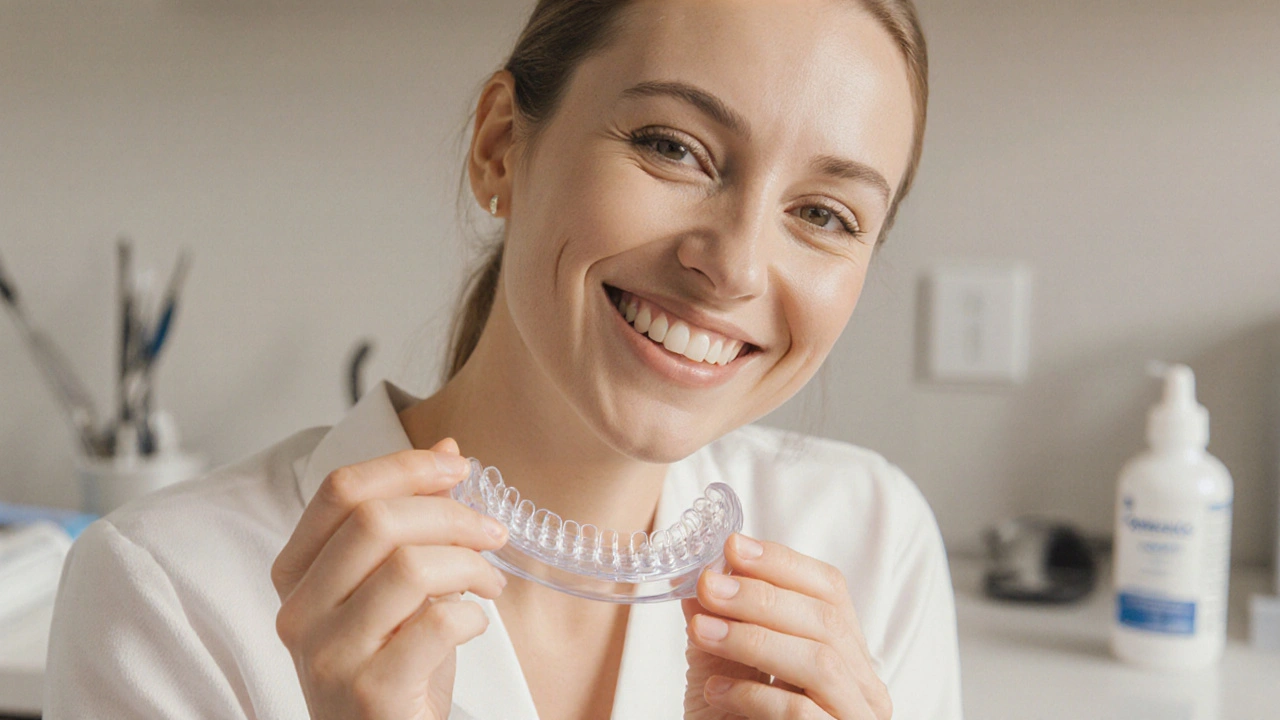Bělení zubů v klinice: co to je, kolik stojí a co vám lékař skutečně doporučí
When you think about bělení zubů v klinice, profesionální postup, který odstraňuje hluboké skvrny a obnovuje přirozenou bílou barvu zubů pod dohledem zubního lékaře. Also known as klinické bělení, it is not just a cosmetic trick—it’s a controlled medical procedure that uses safe concentrations of peroxides to lighten enamel without damaging the tooth structure. Unlike home remedies like kurkuma or activated charcoal, which can scratch your enamel over time, clinical whitening is tailored to your teeth’s condition. Your dentist checks for cavities, gum disease, or exposed roots before starting—because you can’t bleach a tooth that’s already decaying.
What makes this different from store-bought strips or gels? It’s precision. In a clinic, the dentist applies a protective gel to your gums, uses custom-fitted trays or light-activated gels, and monitors the process to avoid sensitivity. The results? Typically 2–8 shades lighter in one visit. And it lasts—up to two years—if you avoid coffee, red wine, and smoking. If you’ve tried DIY methods and got no change or worse, sensitive teeth, you’re not alone. Most over-the-counter products contain too little active ingredient to matter, or too much and they burn your gums.
Bělení zubů v klinice isn’t for everyone. If you have crowns, veneers, or fillings on your front teeth, those won’t lighten—so you might need replacements afterward. Pregnant women are usually advised to wait. And if your discoloration comes from antibiotics like tetracycline taken as a child, whitening might not help much—you’ll need veneers instead. That’s why the first step is always a consultation. A good dentist won’t push you into whitening. They’ll show you photos of your current shade, explain what’s possible, and give you alternatives.
Related to this is zubní plak, ten tenký, lepkavý film na zubech, který se mění v kámen, pokud ho neodstraníte. Also known as plak, it’s the main reason teeth look yellow even after brushing. Plak traps stains from food and drinks. Before any whitening, your dentist will remove it with professional cleaning. Skipping this step means the bleach just sits on top of grime—no real improvement.
And then there’s zubní lékař, osoba, která nejen provádí bělení, ale také rozhoduje, zda je pro vás vůbec vhodné. Also known as dentista, they’re your filter between marketing hype and real dental health. A trustworthy one won’t promise miracles. They’ll tell you if your teeth are too thin, if you have receding gums, or if whitening could make existing sensitivity worse.
What you’ll find below are real stories and practical guides from people who’ve been there—whether they got whitening, regretted it, or discovered a better solution. No fluff. Just what works, what doesn’t, and what your dentist might not have time to explain during your 15-minute visit.
Opalescence bělení: Bezpečné a efektivní řešení pro bělení zubů
Opalescence bělení je bezpečná a efektivní metoda pro osvěžení barvy zubů doma. Zjistěte, jak funguje, kdy je vhodné použít a jak udržet výsledek dlouho.
read more